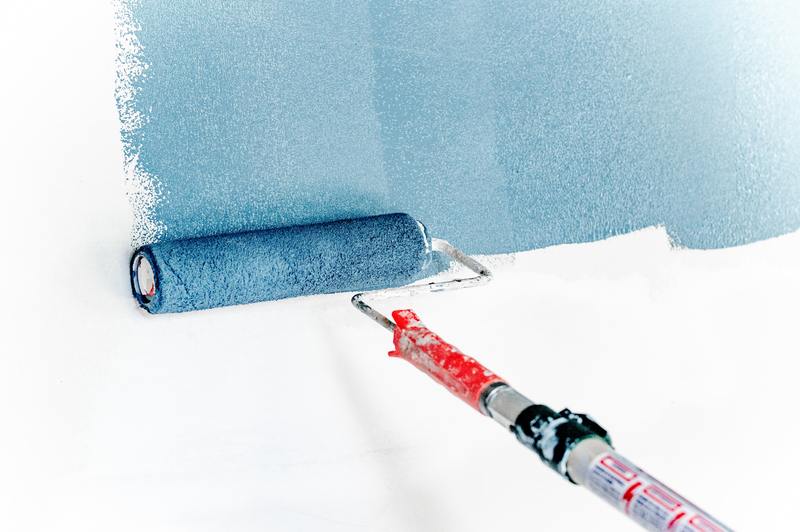Knowing what happens if you paint over mold helps you avoid this huge mistake. Painting over mold will allow it to thrive behind the scenes, making it grow more extensively and eventually chip away the paint that covers it.
Learning that painting over mold should be accompanied by learning how to deal with mold growth properly. Continue reading to know more about the effects of painting over mold and the proper ways to handle mold growth.

What Will Happen When You Paint Over Mold?
Painting over mold may seem like a cheap and easy way to cover up the mold growth and ultimately solve it. As you will see, it is as ineffective in solving the issue as doing nothing at all.
The mold stays alive
Painting over the mold only covers up the ugly green, black, and brown stains. It does nothing to kill the mold or stop it from growing from behind the scenes.
The mold will chip the paint
Eventually, the mold will grow so much that it begins pushing on the paint over it. This will cause the paint layer to chip, bubble, and peel, meaning that the fungi are still growing and multiplying underneath.
The mold will cause more damage
Most importantly, the unchecked and continuous fungal growth underneath allows the mold to cause more damage to your property and your health. Once the mold growth becomes extensive, remediation and removal may not be possible. If mold has found its way inside your drywall, you will have to cut out the entire affected section and replace it.
Your, your family’s, and your pets’ health are also affected by mold growth. According to the CDC, mold exposure can cause stuffy nose, wheezing, itchiness, and redness of eyes and skin.
Your family can also experience more severe symptoms, especially if they have asthma or compromised immune systems. People with compromised immune systems can develop respiratory tract infections and hypersensitive pneumonitis, among others.
Different kinds of mold can also have other effects. S. marcescens, a species of bacteria that produces pink mold, can cause respiratory and urinary tract infections, bloodstream infections, and meningitis, among other diseases.
With all things accounted for, painting over mold seems like a cheap way to fix the problem in the short term. However, the treatment for diseases and removal of mold growth will cost you more in the long run.
What To Do Instead Of Painting Over Mold
Method #1. Prevention
Like other fungi, Mold uses fungal spores that travel through the air until it finds a suitable place to grow. Once the spores find a damp place filled with organic material they can feed off of, they will stay there and multiply.
As such, you can find mold on wet wood, window and door frames, drywall, carpets, and other moist places inside your home. Therefore, to prevent mold from growing in your home, you should keep your home clean and dry.
The first thing you should do to prevent mold growth is to fix any sources of unwanted moisture. It would be best to fix leaky pipes and faulty drains as soon as possible or use a high-quality dehumidifier.
To help you keep your home safe from all fungi, here is a helpful article about the three easy methods on how to get rid of mold spores in the air.
To avoid paying huge amounts for repairs, you can put mold prevention processes in place. For example, if you live in a particularly damp area, you can use mold-resistant paint and primers.
Mold-resistant paints can curb future mold growth. Using these paints on clean, disinfected surfaces would be best because these paints and primers work proactively and will not kill the already existing fungal growth.
Method #2. Removal using home products
Despite all efforts of prevention, mold can still sometimes find its way into your home. Luckily, there are easy ways to remove them using products found at home before they start spreading.
You can use a paste made of one part dish soap and three parts baking soda to remove mold. Using a brush and the paste, you can scrub away all traces of mold.
Afterward, you can disinfect the area using a solution of one part water and one part bleach. Spray the site using the solution and let it sit for a few minutes before rinsing.
Removing severe mold growth inside your walls can be tricky but possible. Here is a helpful guide on how to remove mold from inside your walls.
Method #3. Remediation
If the spread of the mold is too severe for home remedies, you should call your local mold removal and remediation specialists. Remediation specialists are professionals that can safely clean and dispose of building materials.
These professionals will remove all mold and control airborne spores. Mold remediation companies can also clean and disinfect carpets and other personal properties if they can still be saved.
Conclusion
Knowing what happens if you paint over mold allows you to make informed decisions about serious fungal growth. This knowledge, paired with information regarding the proper prevention, removal, and remediation, will help you keep your and your family safe from harm and save you money in the long run.
